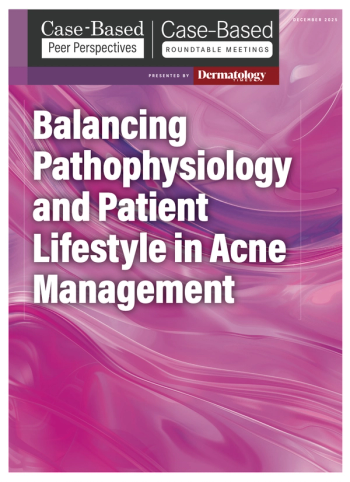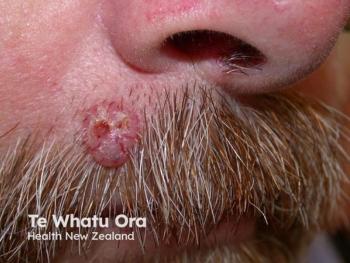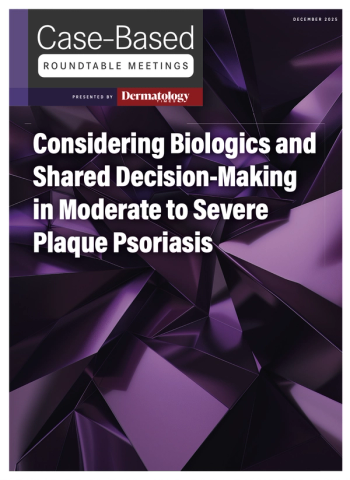
Journal Digest: July 23, 2025
Key Takeaways
- Chronic pruritus in CTCL significantly affects quality of life, with a new Pruritus-Score correlating with QoL measures.
- Bibliometric analysis of dermal macular hyperpigmentation shows a focus on clinical presentation, with India leading in research.
This review of the latest dermatologic studies includes insights into pruritus as an indicator for QoL in CTCL, the research landscape of acquired dermal macular hyperpigmentation, and more.
The Journal of Dermatology: Pruritus Is an Indicator for Quality of Life in Cutaneous T-Cell Lymphoma
In a recent cross-sectional study of 36 patients with cutaneous T-cell lymphoma (CTCL), researchers found that chronic pruritus significantly impaired quality of life (QoL), often preceding visible lesions and presenting with diverse triggers and characteristics. Standard antipruritic therapies offered limited relief, and pruritus was rarely assessed systematically. By analyzing patient-reported outcomes, the study developed a 3-item Pruritus-Score (combining skin involvement, current, and worst pruritus), which correlated strongly with both dermatologic and cancer-specific QoL measures, particularly fatigue and emotional and social functioning.1
Dermatology Research and Practice: Research Landscape of Acquired Dermal Macular Hyperpigmentation: A Bibliometric Analysis
A recent bibliometric analysis identified and evaluated the top 100 most cited publications on acquired dermal macular hyperpigmentation, a group of pigmentary disorders including lichen planus pigmentosus, ashy dermatosis, and Riehl’s melanosis. Using Web of Science, researchers analyzed trends in publication type, citation count, country of origin, journal, and research focus. Most studies originated from India, South Korea, and the United States, with India contributing the highest number of publications and top corresponding authors. The analysis highlighted a dominant focus on clinical presentation and treatment, with fewer studies addressing epidemiology, histopathology, and quality of life.2
International Journal of Dermatology: Optimizing Post-Acne Scar Treatment: A Pilot Comparative Study of Endo-Radiofrequency Subcision With and Without Platelet-Rich Plasma
In a pilot split-face clinical trial, researchers compared Endo-RF subcision alone versus Endo-RF subcision combined with platelet-rich plasma (PRP) in treating moderate to severe facial acne scars. Ten patients underwent treatment, with each side of the face receiving one modality. Both interventions significantly improved acne scars based on Goodman and Baron's quantitative and qualitative grading systems. Although the PRP + Endo-RF group showed greater numerical improvement in scar scores, the difference between groups was not statistically significant. No adverse effects were reported.3
International Journal of Dermatology: The Use of Morphology-Directed Targeted Immunosuppression With Dupilumab in Cutaneous Immunotherapy Related Adverse Events
Newly-published commentary highlighted the growing importance of morphology-directed targeted immunosuppression, particularly with dupilumab, in managing cutaneous immune-related adverse events (cirAEs) related to cancer immunotherapy. Given the limitations and risks associated with systemic glucocorticoids, especially their potential to reduce immunotherapy efficacy and increase mortality, the authors advocated for phenotype-specific alternatives. They referenced a new systematic review which found high clinical response rates to dupilumab across multiple cirAE morphologies (e.g., eczema, lichenoid dermatitis, bullous pemphigoid).4
The Journal of Dermatology: Efficacy and Safety of the Topical Gene Therapy Beremagene Geperpavec-svdt (B-VEC) in an Open-Label Study of Japanese Subjects With Dystrophic Epidermolysis Bullosa
In an open-label study, researchers evaluated the safety and efficacy of beremagene geperpavec-svdt (B-VEC), a topical gene therapy, for patients with dystrophic epidermolysis bullosa. Four out of 5 enrolled patients completed weekly B-VEC treatment for up to 52 weeks. All showed complete wound healing at 3 and 6 months, with sustained closure in most patients through 12 months. Treatment was well tolerated, with no serious adverse events reported, and findings aligning with prior global studies.5
References
- Roggo A, Wüest Y, Dummer R, Ramelyte E. Pruritus is an indicator for quality of life in cutaneous T-cell lymphoma. J Dermatol. Published online July 18, 2025.
doi:10.1111/1346-8138.17847 - Hamid A, Turner K, Elbuluk N. Research landscape of acquired dermal macular hyperpigmentation: a bibliometric analysis. Dermatol Res Pract. Published online July 15, 2025.
doi:10.1155/drp/8871423 - Ahramiyanpour N, Kaveh R, Lotfi E, Rastaghi F. Optimizing post-acne scar treatment: a pilot comparative study of endo-radiofrequency subcision with and without platelet-rich plasma. J Cosmet Dermatol. Published online July 16, 2025.
doi:10.1111/jocd.70345 - Dulmage B, Kaffenberger BH. The use of morphology-directed targeted immunosuppression with dupilumab in cutaneous immunotherapy-related adverse events. Int J Dermatol. Published online July 17, 2025.
doi:10.1111/ijd.17956 - Natsuga K, Tsuruta D, Takashima S, et al. Efficacy and safety of the topical gene therapy beremagene geperpavec-svdt (B-VEC) in an open-label study of Japanese subjects with dystrophic epidermolysis bullosa. J Dermatol. Published online July 16, 2025.
doi:10.1111/1346-8138.17863
What new studies have you been involved with or authored? Share with us by emailing
Newsletter
Like what you’re reading? Subscribe to Dermatology Times for weekly updates on therapies, innovations, and real-world practice tips.


















